Two Weeks Notice Template for Resignation Letter
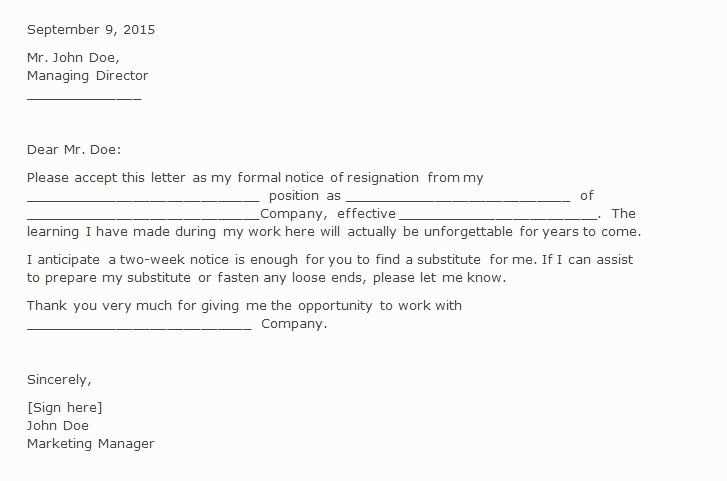
When you’re ready to move on from your current position, it’s important to communicate your decision in a clear, respectful manner. This step ensures professionalism, maintains positive relationships, and leaves the door open for future opportunities. Here, we’ll explore how to craft a brief yet formal announcement of your departure, providing a strong foundation for your transition out of the company.
Essential Elements to Include
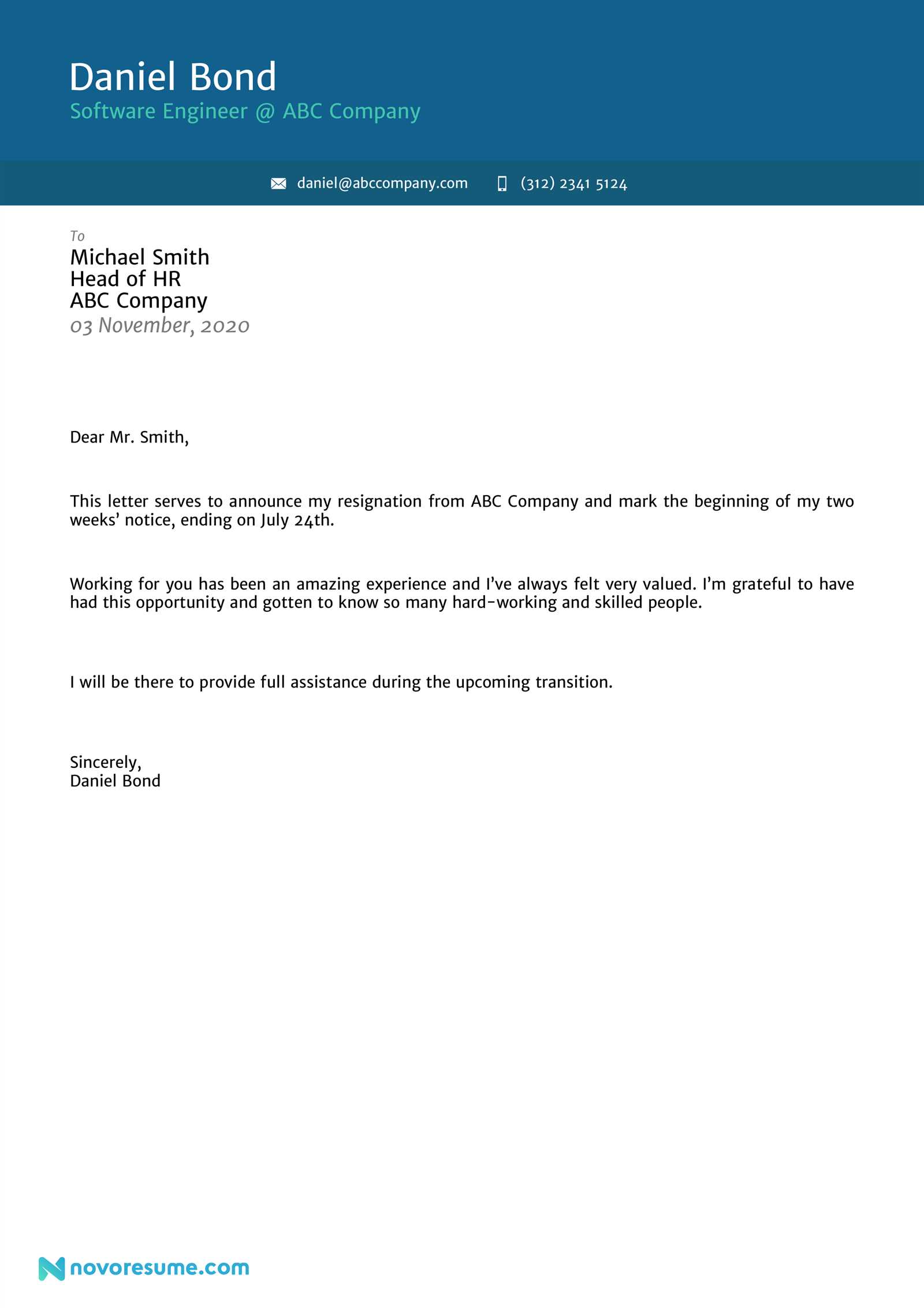
A well-crafted message should cover key points that will make the process smooth for both you and your employer. Here are the main aspects to consider:
- Gratitude: Always express appreciation for the opportunity.
- Clear timeline: Specify when you plan to depart to allow time for proper planning.
- Professional tone: Keep the tone courteous, even if you’re leaving due to negative reasons.
Why Timing Matters
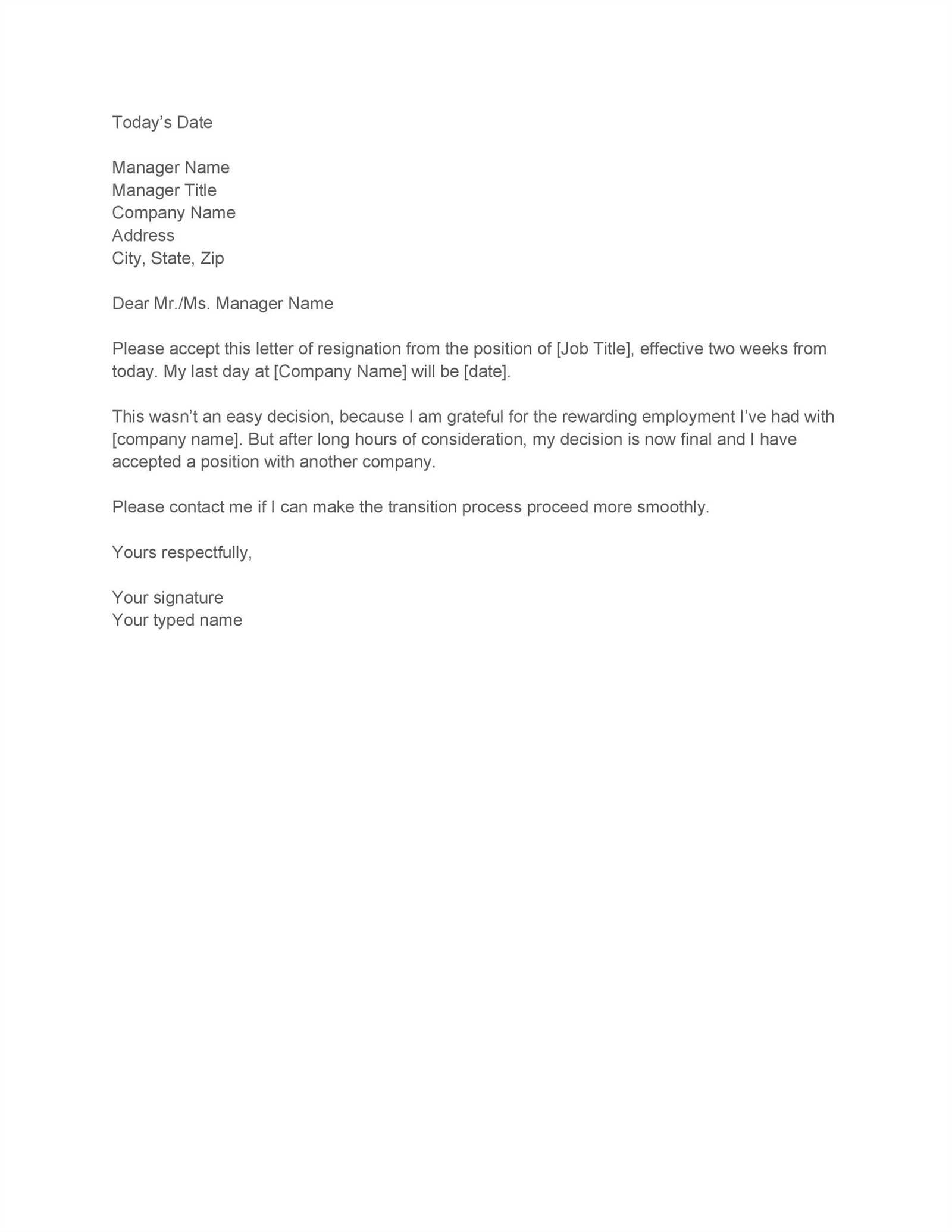
Providing an appropriate lead time is critical in helping your employer prepare for your departure. It shows respect for the business’s operations and allows them to start the process of finding a replacement or redistributing tasks.
Key Phrases to Use
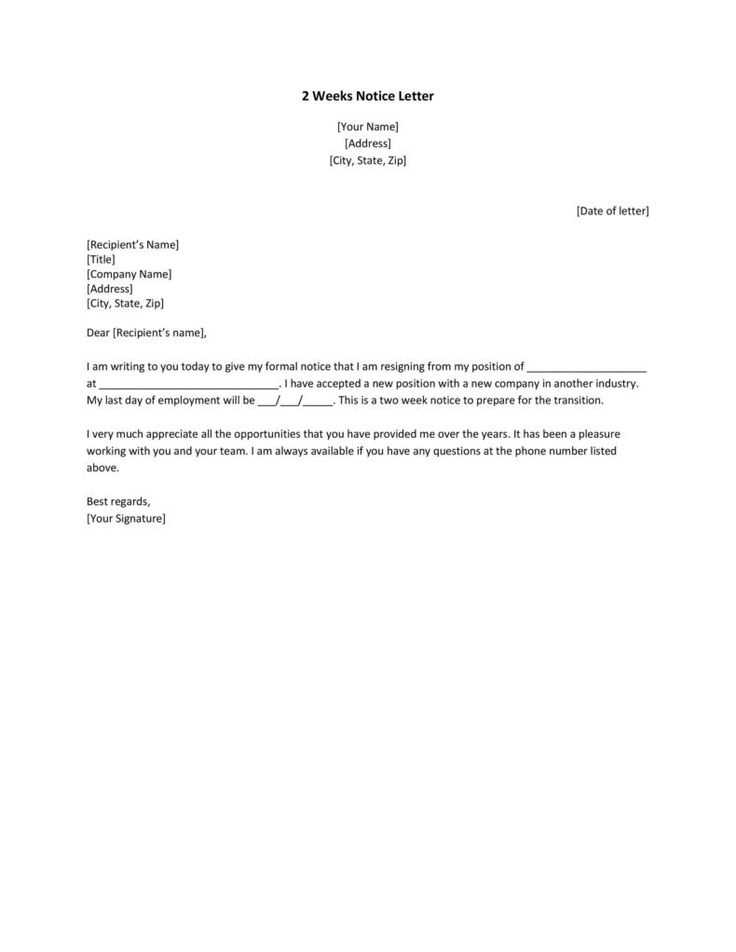
When expressing your decision, some common phrases can help maintain professionalism while remaining clear and to the point. For instance, “I am writing to inform you of my decision to step down from my position,” or “After careful consideration, I have chosen to pursue a new opportunity.” These sentences make it easy for the reader to understand your intent without unnecessary elaboration.
Common Mistakes to Avoid
It’s easy to make mistakes when drafting such important communications. Here are some things to keep in mind:
- Don’t provide excessive details about why you’re leaving.
- Avoid negative comments or criticisms of the company or your role.
- Never forget to include your final working day.
What to Do After Submission
Once you’ve submitted your communication, be prepared for the next steps. Your manager may ask for a meeting to discuss your decision further, or they may begin working on a transition plan. It’s important to remain cooperative and flexible during this time.
How to Handle a Counteroffer
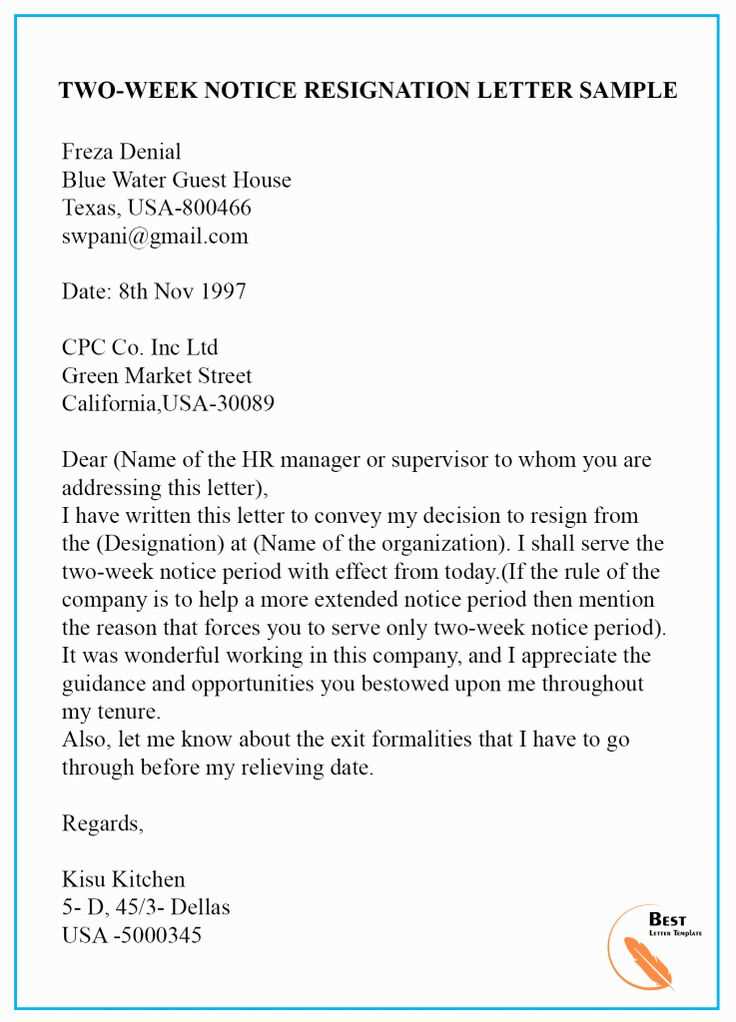
If you receive a counteroffer, consider your decision carefully. It’s an important moment to reflect on your reasons for leaving and whether those concerns are addressed by the new offer. If you choose to move forward with your plans, be respectful and firm in your response.
Guidelines for Professional Departure Communication
When deciding to leave your current role, it is essential to communicate your intention clearly and professionally. A respectful and well-structured announcement allows both you and your employer to handle the transition smoothly and with mutual understanding. This section will guide you on how to approach the process of informing your employer, crafting your message, and managing the next steps.
Why Timely Communication is Crucial
Providing an adequate lead time allows the company to prepare for your departure, whether by initiating a search for your replacement or by adjusting workloads. By respecting this timeline, you demonstrate professionalism and consideration for the organization.
How to Structure Your Departure Message
When crafting your message, aim to keep it concise and to the point. Begin with a clear statement of your decision, followed by your final working day. Express gratitude for the opportunities you’ve had and offer assistance with the transition process if possible.
Important Expressions to Use
In your communication, use simple yet polite phrases such as “I have decided to move on to a new opportunity” or “I will be leaving my role on [date].” These phrases convey your intent professionally while maintaining a respectful tone.
Common Mistakes to Avoid
When stepping down from a position, it’s important to avoid certain pitfalls. Do not go into unnecessary detail about the reasons for your decision, and refrain from negative comments about the company. Be sure to clearly state the last day of your employment to avoid confusion.
What to Do After Submitting Your Communication
After you’ve sent your departure message, be prepared for follow-up discussions. Your manager may request a meeting to discuss your departure, or they may start working on a plan for your transition. During this time, stay flexible and cooperative.
How to Handle a New Offer
If a counteroffer is presented, take time to carefully evaluate it. Consider your reasons for leaving, and assess whether the new proposal addresses your concerns. If you decide to proceed with your original plan, politely and professionally decline the offer.